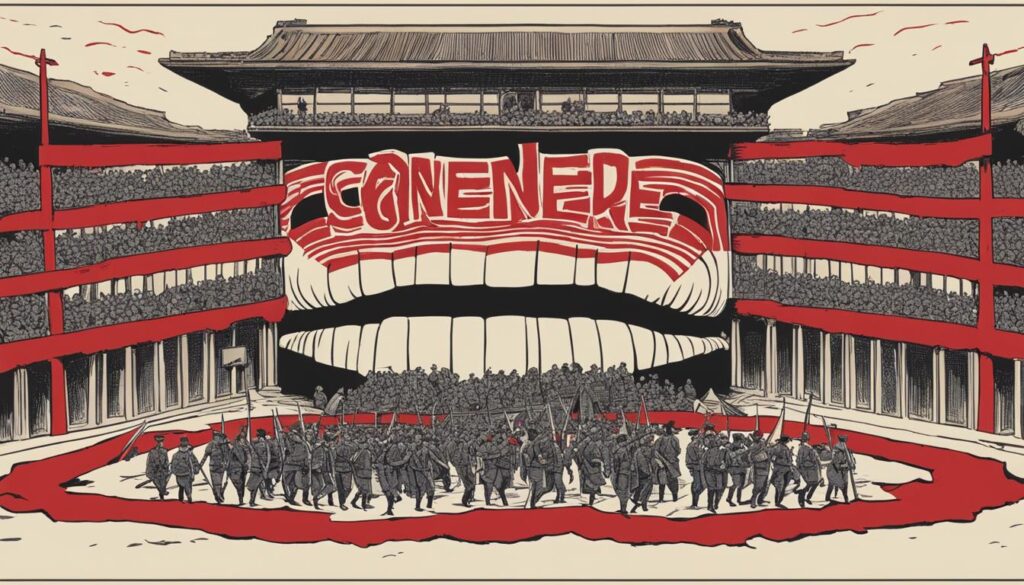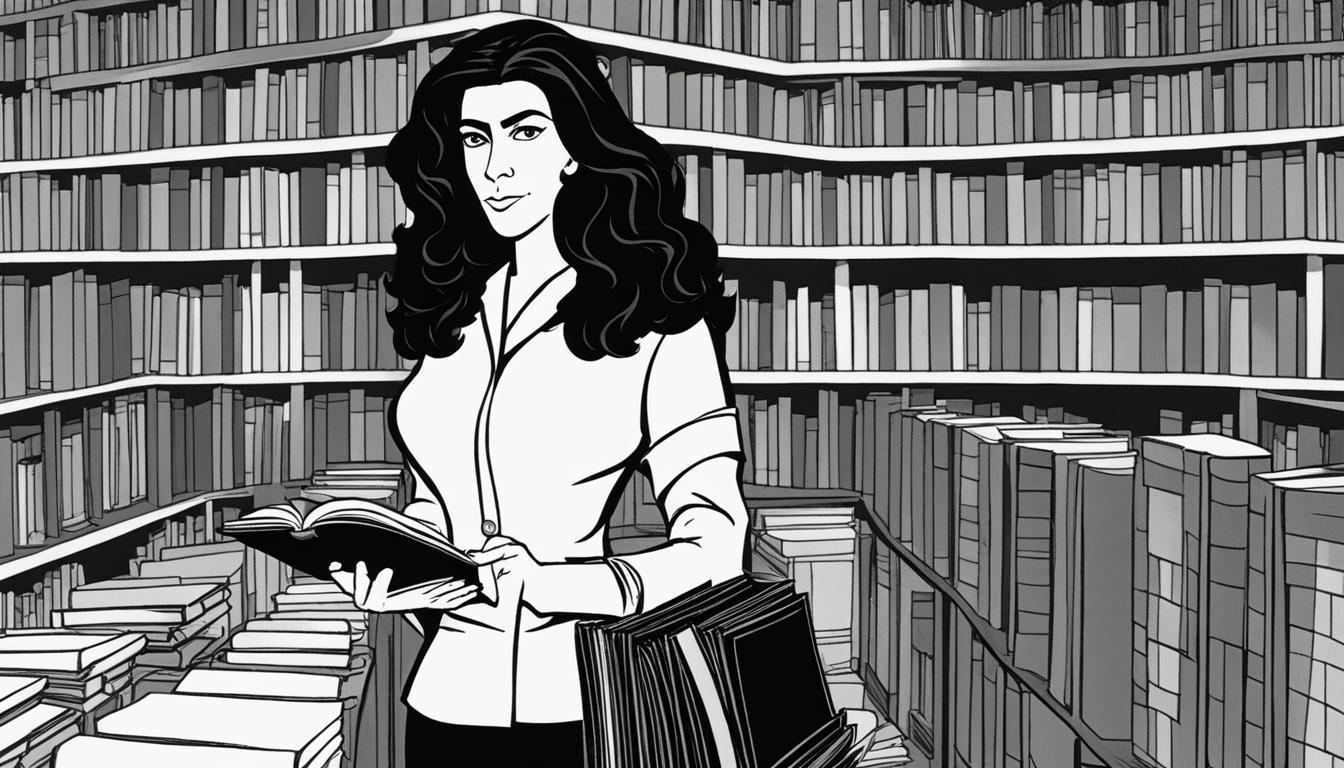If you’re in search of a captivating book summary, look no further than “Persepolis: The Story of a Childhood” by Marjane Satrapi. This graphic memoir tells the poignant tale of a young girl growing up in revolutionary Iran, offering a firsthand account of the political turmoil and societal changes that shaped her childhood.
Satrapi’s autobiographical narrative sheds light on the realities of living through a revolution and censorship, providing a unique perspective on the intersection of personal and historical events. Throughout the book, she recounts the challenges and coming-of-age experiences that transformed her into the person she is today, ultimately painting a vivid picture of life in Iran during an era of significant change.
If you’re interested in learning more about Marjane Satrapi’s childhood and the revolutionary Iran she grew up in, “Persepolis: The Story of a Childhood” is a must-read.
Introduction to “Persepolis”
“Persepolis” is an autobiographical graphic novel by Marjane Satrapi that chronicles her childhood experiences growing up in revolutionary Iran. The novel is unique in its graphic novel format, combining both illustrations and text to create a powerful storytelling device. Marjane’s story is not only a personal account but also sheds light on the political and cultural climate of the time.
Setting: Revolutionary Iran
In the 20th century, Iran underwent significant political and social changes, leading to the emergence of Revolutionary Iran. At the peak of its transformation was the reign of Mohammad Reza Pahlavi, the Shah of Iran, who assumed power in 1941.
Driven by a desire to modernize the country, the Shah undertook several initiatives, including land reform, industrialization, and increased defense spending. However, the autocratic rule of the monarchy, coupled with rampant corruption and repression of civil liberties, led to widespread discontent among Iranians, particularly young people.
The Islamic Revolution of 1979 led to the overthrow of the Shah, culminating in the establishment of an Islamic republic under the leadership of Ayatollah Khomeini. The revolution profoundly impacted Iranian society, culture, and politics, ushering in new challenges and opportunities for the country.
Persepolis by Marjane Satrapi provides a unique perspective on the tumultuous years of revolutionary Iran through the eyes of a young girl growing up in Tehran. Satrapi’s graphic novel presents a compelling narrative of her experiences and sheds light on the complex historical context of the time.
“I was a Westerner in Iran, an Iranian in the West. I had no identity.” – Marjane Satrapi
Marjane’s Childhood
Marjane Satrapi’s childhood was marked by the turbulent times in Iran when Islamic Revolution was taking place. Born in 1969 to a family of educated parents, Marjane was exposed to a liberal mindset that influenced her views and beliefs. Her parents encouraged her curiosity and critical thinking, which helped shape her personality.
Marjane’s family was politically active and vocal against the oppressive regime of the Shah. Her uncle was imprisoned for his political activity, which further fueled her family’s opposition to the Shah’s regime. This political background had a significant impact on Marjane’s life and shaped her perception of the world around her.
Despite the political unrest and censorship prevalent at the time, Marjane was fortunate to receive a good education. She attended a French school in Iran and later went to Austria for higher education.
Political Climate and Marjane’s Perception
During Marjane Satrapi’s childhood, Iran was undergoing a significant transformation. The Islamic Revolution had an enormous impact on the political climate, causing instability and uncertainty. The authoritarian rule of the Shah intensified the situation, leading to protests and demonstrations. The censorship prevalent at the time was also a crucial factor affecting people’s perception of the world.
Marjane, as a child, witnessed the changes and felt the impact of the restrictive environment. Her parents encouraged her curiosity and critical thinking, but it was not easy to navigate the political climate. She struggled to reconcile her love for her country and culture with the oppression and censorship she faced. As she grew up, her perception of the world changed, and she became more aware of the complexities of the political situation.

“In Iran, it’s not like in the West, where censorship is imposed by the government. In Iran, censorship is self-imposed.”
The quote highlights the subtle yet powerful censorship prevalent in Iran during Marjane’s childhood. Self-censorship was a way to avoid punishment and protect oneself and one’s family. The fear of being politically incorrect could lead to serious repercussions, including imprisonment or worse. Marjane’s struggles with censorship inspired her to create “Persepolis,” a graphic novel that challenges the dominant narratives and provides an alternative perspective.
Challenges and Coming-of-Age
Marjane faces numerous challenges as she grows up in a society undergoing significant changes. The revolution in Iran has a profound impact on her life, and she faces censorship, political unrest, and the horrors of war. These challenges shape her perception of the world and lead to a journey of self-discovery and the formation of her identity. As she comes of age, Marjane must navigate the complexities of societal expectations and the changing political climate of her country, all while trying to find her place in the world.
Throughout the graphic novel, Marjane’s challenges ultimately pave the way for her to mature and develop a clearer sense of self-identity. Her experiences show the reader the struggles of growing up in a society in flux, and the importance of finding one’s own voice amidst the noise of political and societal upheaval.
“I realized that I hadn’t changed…but my country had changed. And I had to find my place all over again.”
Personal and Historical Impact
Marjane’s story is deeply intertwined with the historical events of Iran, notably the Iran-Iraq War, which had a significant personal impact on her and her family. The war lasted for eight years, resulting in over a million deaths and leaving many wounded and traumatized.
Marjane’s family was not immune to the horrors of war, with her uncle being killed while serving in the military. This tragic event deeply affected Marjane, highlighting the human cost of war. She also had to deal with the constant fear and uncertainty that permeated everyday life, with the sounds of bombs and sirens becoming an all-too-familiar background noise.
The Toll of War
The Iran-Iraq War had a profound impact on people’s lives, affecting them in different ways. Marjane’s family lost loved ones and witnessed the destruction of their homeland, leading to a sense of displacement and loss.
“War always takes you by surprise,” says Marjane. “It takes everything from you, including your sense of identity and belonging.”
For Marjane, the war also served as a catalyst for her to leave Iran, as her parents feared for her safety and future in an unstable and hostile environment.
Reflection and Growth
Despite the trauma and hardships caused by the Iran-Iraq War, Marjane’s experiences also allowed her to grow and reflect on the world around her. She became more aware of the injustices and complexities of power and politics, forming her own opinions and beliefs. This process of self-discovery and reflection is a recurring theme throughout “Persepolis,” showcasing the power of personal narratives to shape our understanding of historical events.
Artistic Style and Narrative
Marjane Satrapi’s Persepolis stands out for its unique artistic style and the narrative technique employed in the graphic novel format. The visual storytelling approach used in the book enriches the story, making it an engrossing and compelling read.
The simple yet expressive line drawings, combined with the use of monochromatic shades of blue and black, enhance the somber mood of the book and offer a stark contrast to the complex events depicted in the narrative. The use of panel layouts, such as full-page illustrations and double-page spreads, adds to the visual impact of the book.
The narrative structure of the book deftly combines Marjane’s personal experiences with the larger historical context, bringing to life the events that shaped post-revolutionary Iran. The use of first-person narration adds an intimate touch to the narrative, allowing readers to connect with Marjane’s experiences and emotions.
The dialogue and text in the book are also concise and effective, contributing to the overall impact of the story. The balance between words and images is skillfully maintained throughout the book, making it an immersive and powerful experience.
Overall, the artistic style and narrative techniques employed in Persepolis demonstrate the immense storytelling potential of graphic novels, making it a standout work in the genre.
Conclusion
Marjane Satrapi’s “Persepolis” provides a compelling and insightful account of a childhood lived during the turbulent times of revolutionary Iran. Through her use of a graphic novel format, Satrapi skillfully captures the complex and nuanced experiences of individuals living in a society undergoing significant change.
As we have seen throughout this article, “Persepolis” presents a unique perspective on the political and historical events that shaped Iran during this period. Through her personal story, Satrapi sheds light on the impact of war, censorship, and political upheaval on individuals and families.
Furthermore, the artistic style and narrative of “Persepolis” add depth and richness to the storytelling, making it a powerful and memorable work of literature. This autobiographical graphic novel has become a classic and a must-read for anyone interested in the history and culture of Iran.
In conclusion, “Persepolis” by Marjane Satrapi is a significant and thought-provoking work that offers a unique perspective on the experiences of individuals living through times of revolution and upheaval in Iran. Its impact is undeniable, and its relevance remains crucial to understanding the complex history and culture of Iran.



